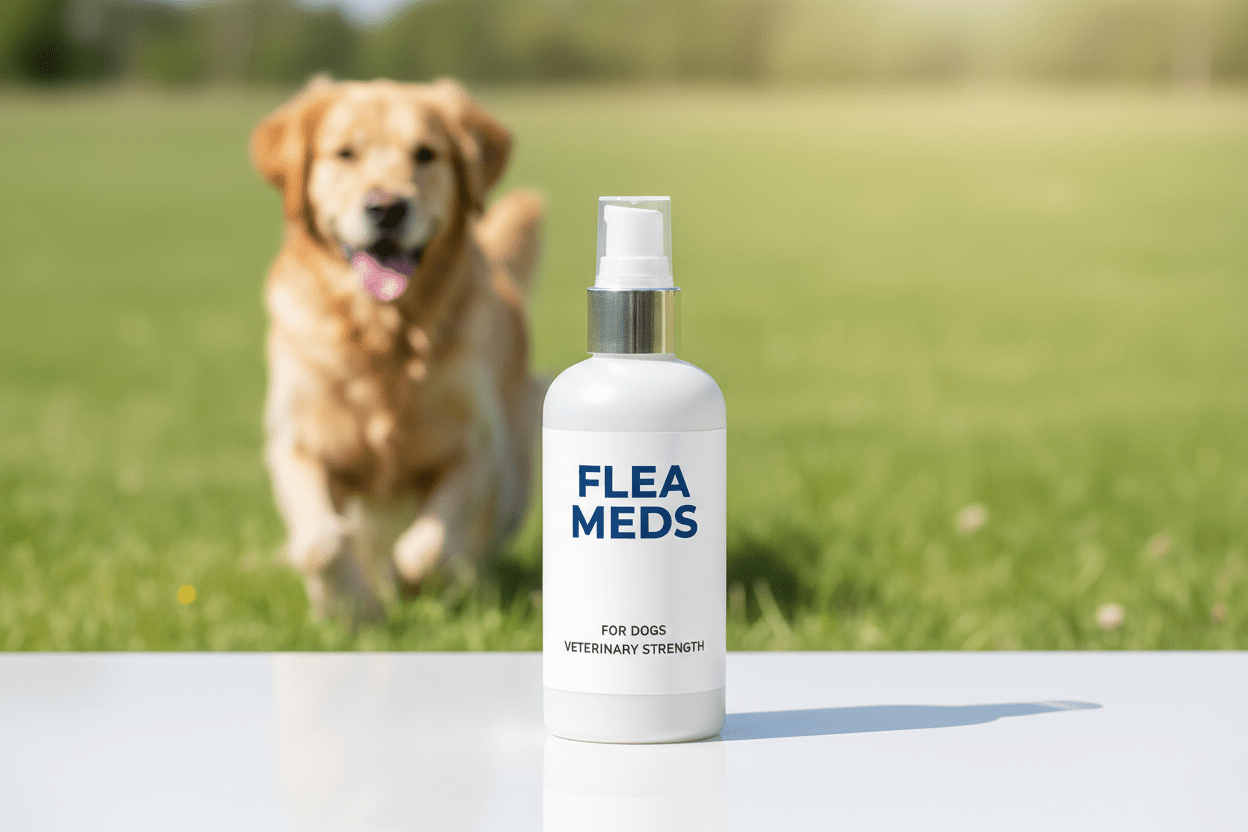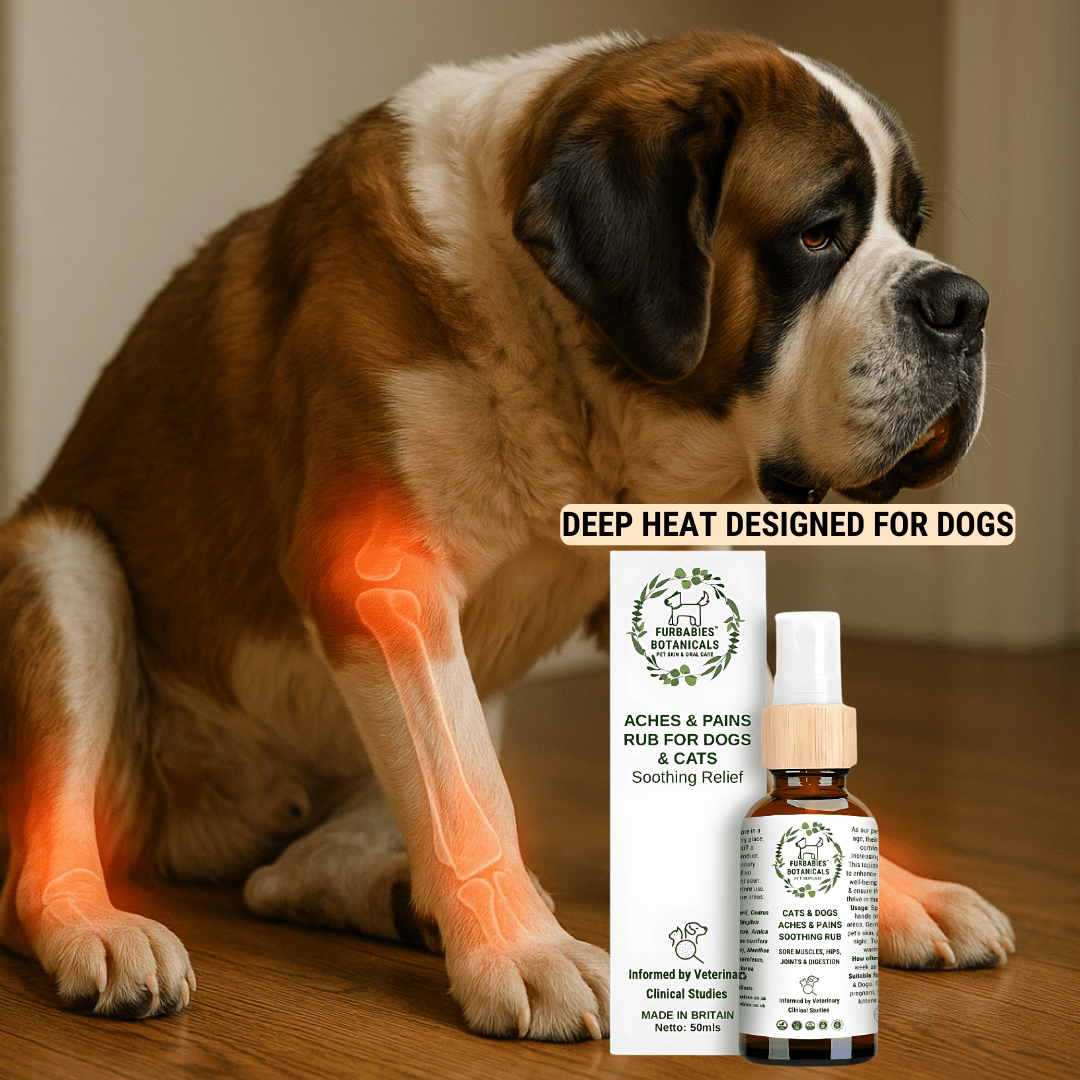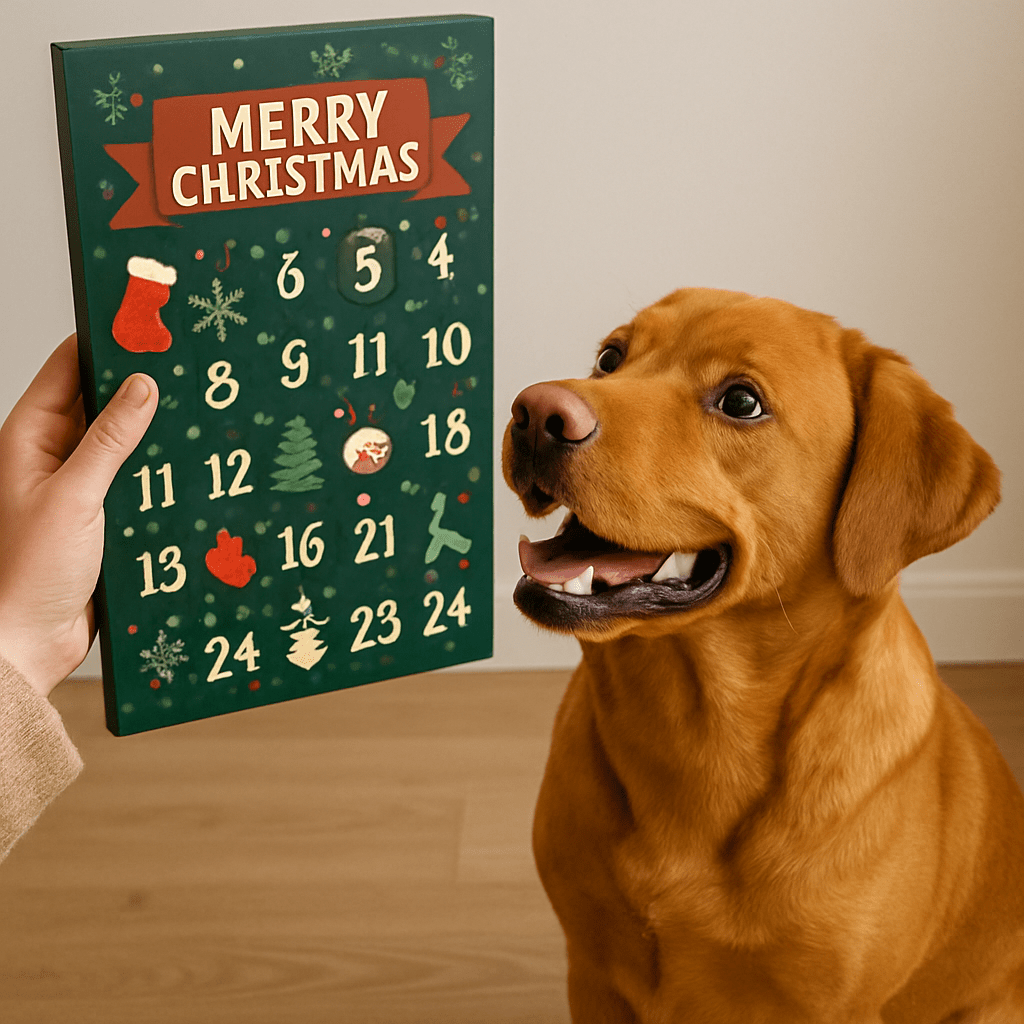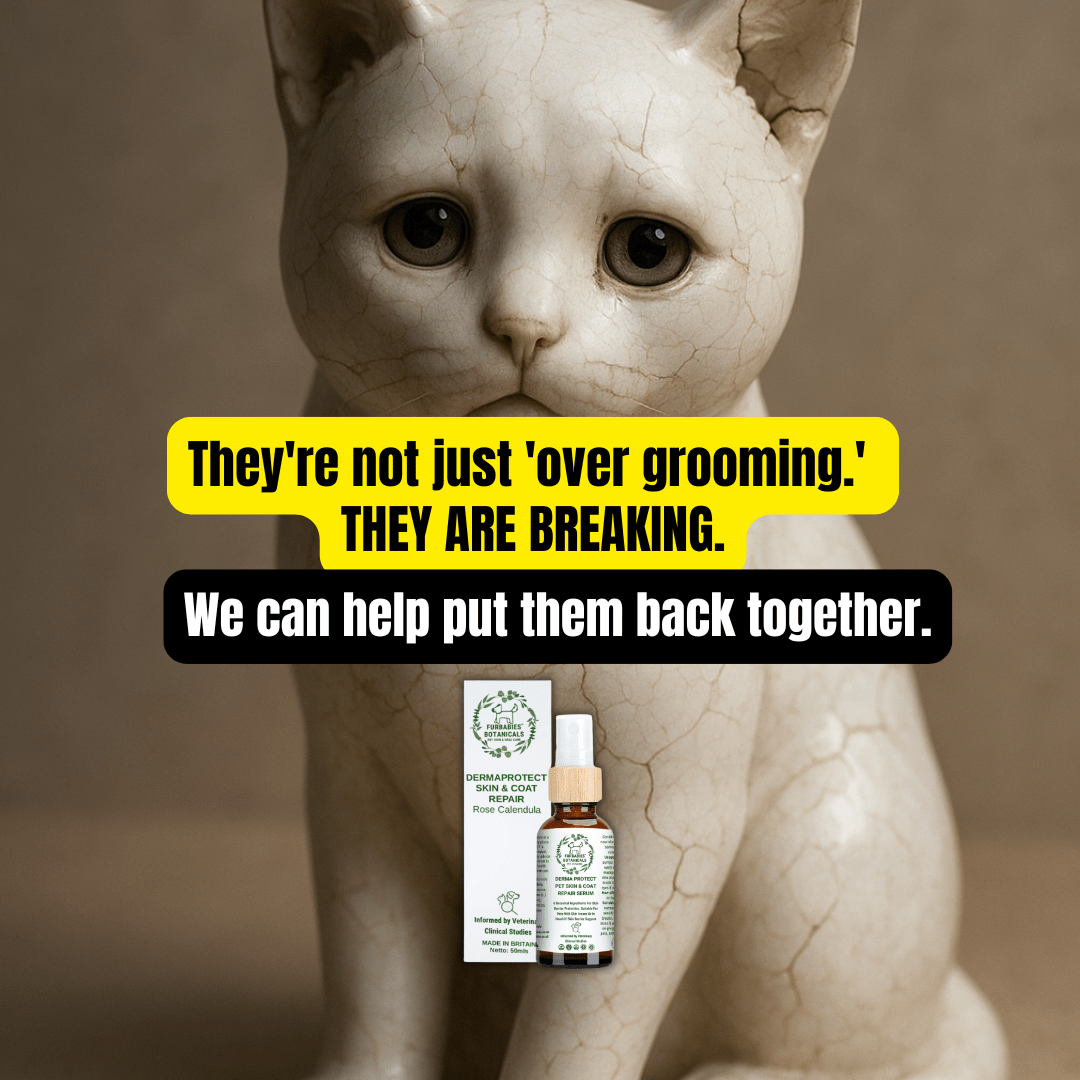Check the pack’s VM number against the VMD Product Information Database on GOV.UK. If the VM, manufacturer and leaflet match the database entry, the product is authorised; if not, don’t use it.
Immediate story hook
“I hadn’t left my flat in weeks… until Rufus, a scruffy rescue dog with stiff hips, made me try again.”
Megan’s story (short): She found Rufus at a local shelter, brought him home, and used FurBabies™ Aches & Pains Rub to help his sore muscles. As Rufus started moving better, Megan began stepping outside again and that simple care routine made all the difference. But when Megan later bought a cheap flea treatment online, she nearly poisoned Rufus the packaging looked right, but the VM number didn’t match the VMD database. She returned it, reported the seller, and now always checks the VMD before buying. This guide shows exactly what she checked and how you can do the same in 60 seconds.
Quick check: Go to the VMD Product Information Database → search the product or VM number → confirm VM, MA holder and SPC match your pack.
When to use this:
-
Before buying flea/ tick meds online (esp. 3rd-party marketplaces or social sellers).
-
If you received a suspiciously cheap pack or different leaflet.
-
After your pet shows unusual side-effects post-treatment.
-
When buying long-acting systemic chews (Bravecto etc.) that persist in the body.
Fast, high-impact 60-second checklist (do this now)
-
Find the VM number on the box/leaflet (format looks like VM12345/6789).
-
Open: https://www.gov.uk/check-animal-medicine-licensed (VMD Product Information Database).
-
Search product name or VM number.
-
Match VM number, pack size, and Marketing Authorisation (MA) holder on the database to the box.
-
If anything differs (no VM, wrong MA holder, no English leaflet, missing batch/expiry) — do not use the product; return it and report it to the VMD.
How to check — step-by-step
-
Open the VMD PID: GOV.UK → “Check if an animal medicine is licensed” or go directly to VMD Product Information Database.
-
Type the product name or VM number in the search bar.
-
Click the product entry and read the SPC/leaflet on the database (this is the official legal text).
-
Compare: VM number on your pack = VM number on PID? MA holder on pack = MA holder in PID? Pack size and species match?
-
Check leaflet: SPC contraindications/warnings must appear in your box leaflet. If the leaflet is missing warnings in the SPC, suspicious.
-
If mismatched: stop, photograph pack & leaflet, contact seller for refund, and report to VMD & Trading Standards.
-
If matched: buy from authorised seller only (vet, registered online vet pharmacy, VMD-accredited retailer).
Packaging red flags (quick reference box)
-
No VM number or VM not found on the VMD PID
-
Spelling/printing errors, blurred logos, or mixed languages without an English leaflet
-
No batch number, no expiry date, or missing manufacturer info
-
Price dramatically below market (too good to be true)
-
Seller is anonymous, overseas, or asks for DMs/WhatsApp payments
Where to buy safely (short list)
Safer: vet clinic, registered veterinary pharmacies (VetUK, PetDrugsOnline), Pets at Home (official lines), VMD AIRS registered online retailers.
Riskier: random marketplace third-party sellers on Amazon/eBay, TikTok/Instagram/WhatsApp sellers, tiny discount stalls.
What to do if your pet reacts (immediate steps)
-
Stop using product. Keep packaging and leftovers.
-
Call your vet urgently if you see vomiting, tremors, breathing trouble, collapse, severe drooling, or unusual behaviour.
-
Photograph box, leaflet, batch code, seller page.
-
Report to VMD (adverse reaction/reporting page) and to Trading Standards. Provide photos and seller details.
Why this matters: long-acting chews & systemic risk
Long-acting systemic tablets (e.g., fluralaner/Bravecto) remain in the bloodstream and tissues for up to 12 weeks. That provides convenience and sustained protection but if the product is counterfeit, mis-dosed, or contaminated, systemic exposure increases the risk of serious adverse events. Always verify authenticity before administering long-acting products.
Megan & Rufus
“Rufus helped me step outside again, then a dodgy flea pack nearly ruined it. Now I always check the VM first or with the Vet Pharmacist at FurBabies Botanicals.” Megan
FAQ (12 real user questions)
Q1 — How do I check a VM number on the VMD website?
Quick: Visit gov.uk/check-animal-medicine-licensed and search the product name or VM number.
Detail: The Product Information Database returns the authorised SPC, MA holder, and VM number. Match every item on your packaging to this official record. If it’s missing, it’s not authorised for GB/NI.
Q2 — What does a VM number look like?
Quick: Format typically looks like VM12345/0123.
Detail: It’s the unique marketing authorisation identifier. If the VM on the pack doesn’t match VMD records (or there is none), the product may be unauthorised or counterfeit.
Q3 — Can I use flea meds bought abroad?
Quick: Only if the product is authorised for use in Great Britain and listed in the VMD PID.
Detail: Authorization differs by jurisdiction; foreign labels may omit UK-specific safety guidance and dosing; importing unapproved medicines can be illegal.
Q4 — Is an unusually cheap price a sure sign of fake?
Quick: Not always, but it’s a red flag — investigate the VM and seller first.
Detail: Sometimes authorised sellers discount stock; however, many counterfeits are sold cheaply to move volume. If price is suspicious, check VM, batch and seller credentials.
Q5 — Where are most counterfeit flea meds sold?
Quick: Third-party online marketplaces and social media are common channels.
Detail: Sellers on eBay, Amazon marketplace, Facebook groups or Instagram DMs may not be vetted. Always verify seller premises and VM numbers before purchase.
Q6 — What should I do if my dog has side effects after using a flea product?
Quick: Stop treatment, contact your vet immediately, save packaging.
Detail: Some ADRs are mild but others require urgent care. Report suspected adverse reactions and counterfeit products to the VMD and Trading Standards.
Q7 — Can I check the leaflet/SPC online?
Quick: Yes — the PID shows the authorised SPC (official leaflet).
Detail: Compare the box leaflet to the PID SPC; omissions or differences in contraindications or warnings are suspicious.
Q8 — How do I report a suspicious product?
Quick: Use the GOV.UK reporting page for veterinary medicine problems and contact Trading Standards.
Detail: Include seller details, photos of packaging, batch numbers and where purchased. The VMD investigates and may remove sellers or issue warnings.
Q9 — Do collars and spot-ons get counterfeited too?
Quick: Yes — any veterinary medicine or device can be counterfeited.
Detail: Spot-ons may be adulterated with toxic compounds; collars may contain incorrect active ingredients. The same VM/pack checks apply.
Q10 — Why does Bravecto last 12 weeks — is that safe?
Quick: Bravecto’s active (fluralaner) has PK properties (lipophilic, high tissue distribution, long half-life) that allow sustained levels; safety depends on correct product & individual patient risk.
Detail: Because the drug persists systemically, verifying authenticity and vet screening for comorbidities is critical prior to use.
Q11 — Can I trust big discounters (B&M, The Range)?
Quick: Big retailers may stock legitimate non-prescription products, but always check the pack’s VM and seller credentials.
Detail: Some discount stores source from secondary suppliers — if the product is supposed to be prescription-only or POM-V, it shouldn’t be sold off-the-shelf without vet oversight.
Q12 — What if the VM matches, but the leaflet seems different?
Quick: If the VM matches exactly and MA holder is correct, it’s likely genuine; still, contact the MA holder or VMD if the leaflet differs materially.
Detail: Packaging updates happen. But any missing safety warnings require escalation to the MA holder or VMD.













Share:
Topical Joint Pain Relief But Formulated For Dogs
Chronic Pain, Muscle Loss, and Early Mortality in Senior Dogs: The Hidden Threat of Sarcopenia